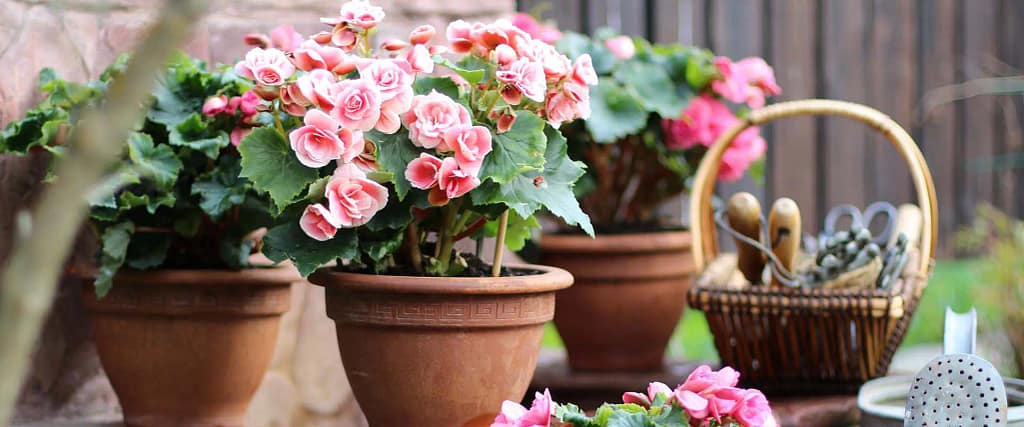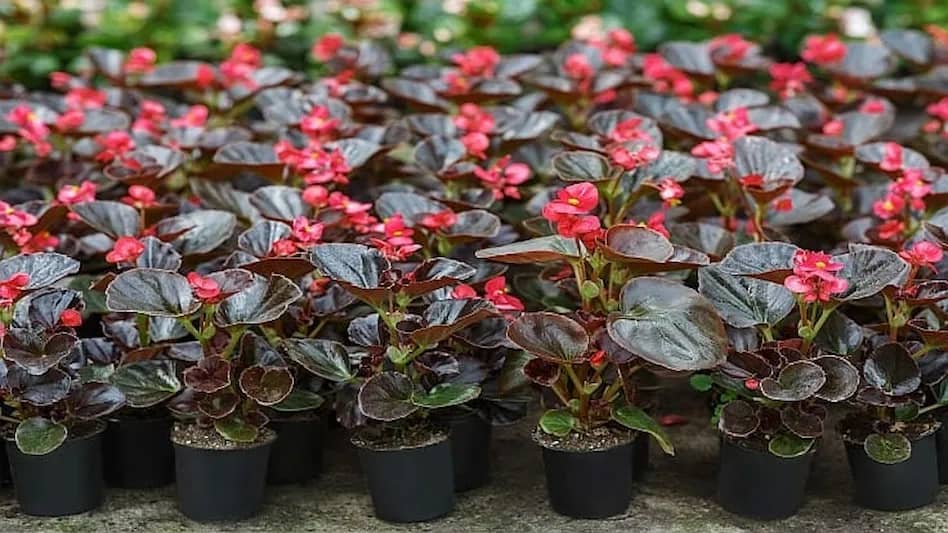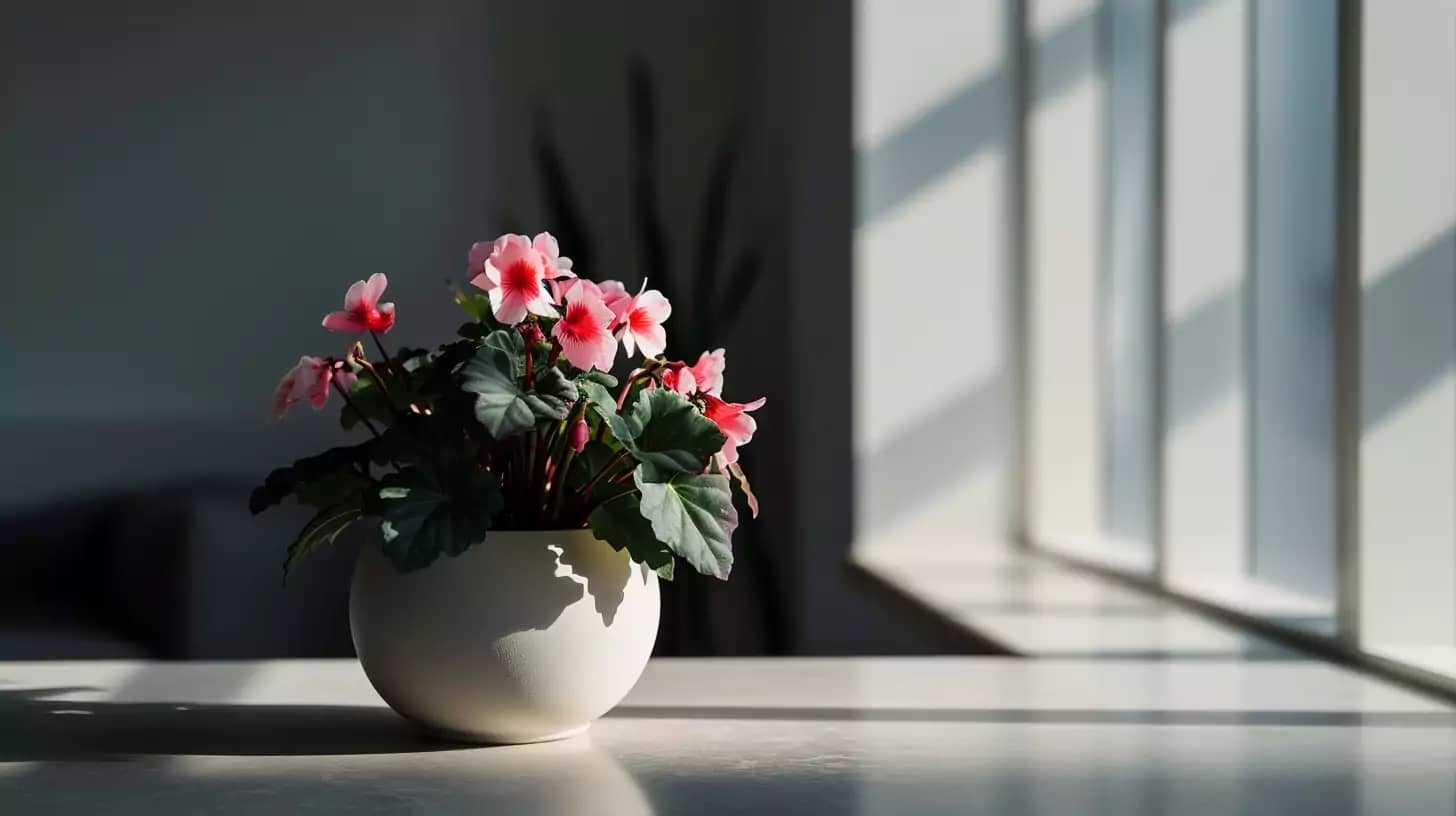Introduction: Discover the joy of cultivating begonias in your home garden with our comprehensive guide. Whether you’re a novice or seasoned gardener, begonias offer vibrant colors and easy care, making them perfect for any indoor or outdoor space.
Choosing the Right Begonia Variety: Begin by selecting the ideal begonia variety for your home environment. Popular types include Rex, Tuberous, and Wax begonias, each offering unique foliage and bloom characteristics suited to different conditions.
Planting Location and Conditions: Begonias thrive in well-draining soil with partial shade to filtered sunlight. Ensure your chosen location provides adequate light without direct sun exposure, as this can scorch the delicate leaves.

Begonia Plants
Planting Process:
- Preparation: Prepare the soil by mixing in organic matter for nutrients and improved drainage.
- Planting Depth: Place begonia tubers or seedlings just below the soil surface, spaced according to the variety’s specific requirements.
- Watering: Keep the soil consistently moist but avoid waterlogging, as begonias are susceptible to root rot.
- Fertilization: Feed your plant with a balanced fertilizer during the growing season to promote healthy growth and vibrant blooms.

Care and Maintenance:
- Watering Routine: Water Begonia Plants regularly, allowing the soil to dry slightly between waterings.
- Pruning: Remove spent flowers and yellowing leaves to encourage continuous blooming and maintain plant health.
- Pest Control: Monitor for pests like aphids or spider mites; treat promptly with organic solutions to prevent infestations.
- Winter Care: In colder climates, bring potted plant indoors before frost, or mulch outdoor plants to protect tubers during winter dormancy.
Troubleshooting Common Issues: Address common problems such as yellowing leaves (indicative of overwatering or nutrient deficiencies) and leggy growth (caused by insufficient light).
Propagation Tips: Expand your plant collection by propagating through leaf or stem cuttings in spring or early summer. Place cuttings in a well-draining medium, keeping them moist until roots develop.

- What are begonias? Begonias are flowering plants known for their ornamental foliage and colorful blooms. They come in various types such as Rex, Tuberous, and Wax begonias, each with distinct characteristics.
- Where should I plant begonias? Begonias thrive in locations with filtered sunlight or partial shade. Avoid direct sunlight, becouse direct sunlight can scorch their delicate leaves. They grow well both indoors and outdoors, making them versatile for different environments.
- How often should I water begonias? Water plant regularly to keep the soil evenly moist. They prefer slightly moist conditions but can suffer from root rot if overwatered. Allow the top inch of soil to dry out between waterings.
- What soil is best for begonias? Begonias prefer well-draining soil rich in organic matter. A peat-based potting mix or soil mixed with perlite or sand works well to ensure good drainage.
- How do I fertilize begonias? Fertilize begonias regularly during the growing season with a balanced fertilizer. Apply according to the manufacturer’s instructions to promote healthy growth and vibrant blooms.
- Can begonias be grown from seeds? Yes, begonias can be grown from seeds, but they require specific conditions for germination. It’s often easier to start with tubers, cuttings, or established plants for quicker and more reliable results.
- How do I propagate begonias? Begonias can be propagated from leaf or stem cuttings. Take cuttings in spring or early summer, place them in a well-draining rooting medium, and keep them warm and moist until roots develop.
- What pests and diseases affect begonias? Common pests include aphids, spider mites, and powdery mildew. Monitor your plants regularly and treat any infestations promptly with appropriate organic treatments to prevent damage.
- How do I overwinter begonias? In colder climates, bring potted begonias indoors before the first frost. For outdoor plants, dig up tubers and store them in a cool, dry place over winter. Alternatively, mulch outdoor plants to protect tubers from frost.
- Why are my begonia leaves turning yellow? Yellowing leaves on begonias can indicate overwatering, underwatering, nutrient deficiencies, or pests. Adjust watering practices, ensure proper fertilization, and monitor for pests to maintain plant health.
- How do I care for begonias indoors? Indoors, place begonias near a window with filtered sunlight. Water regularly, fertilize during the growing season, and provide adequate humidity. Monitor for pests and maintain good airflow around the plants.
- When do begonias bloom? Begonias bloom throughout the growing season, typically from spring to fall. Deadhead spent flowers regularly to encourage continuous blooming and promote plant health.

